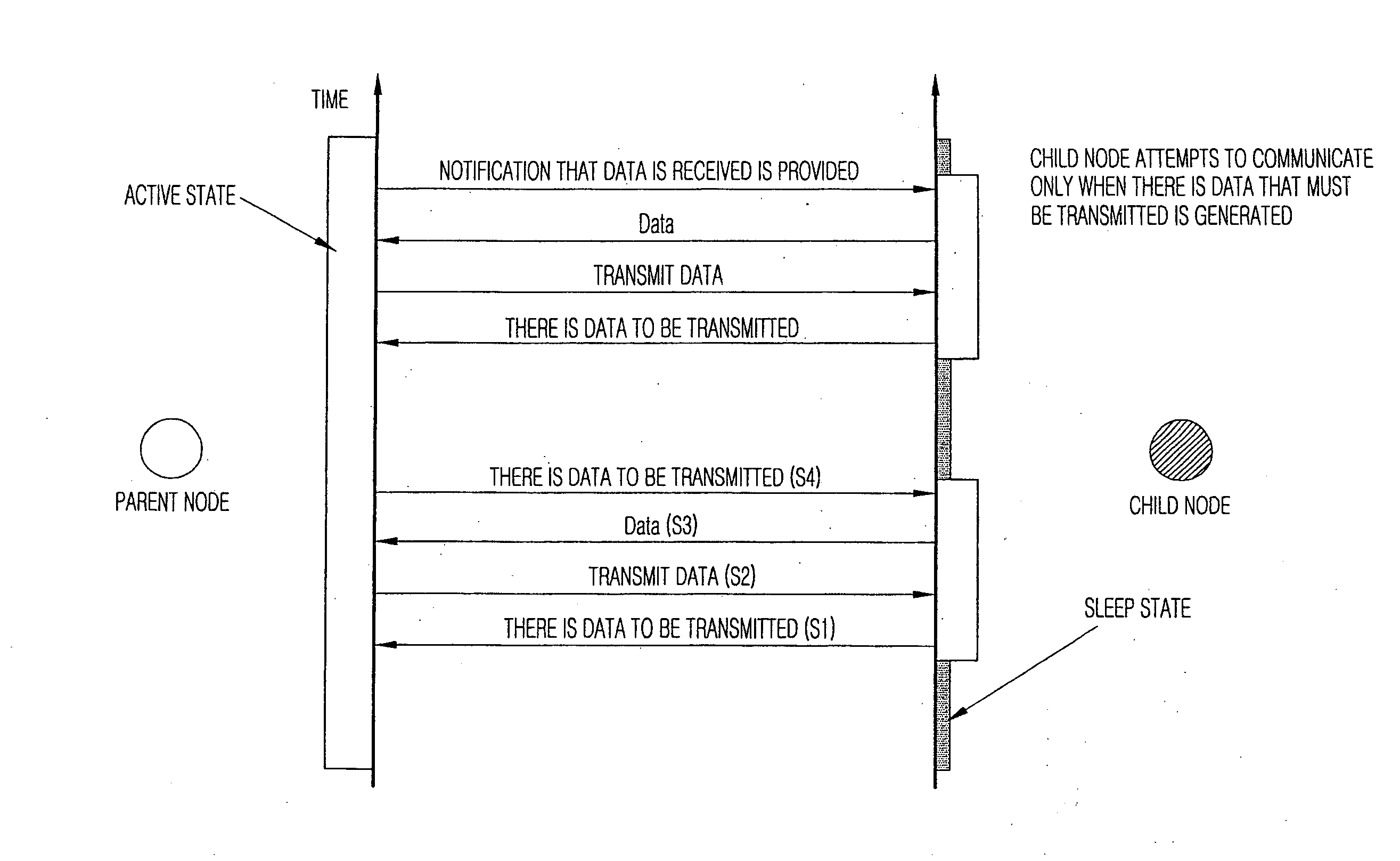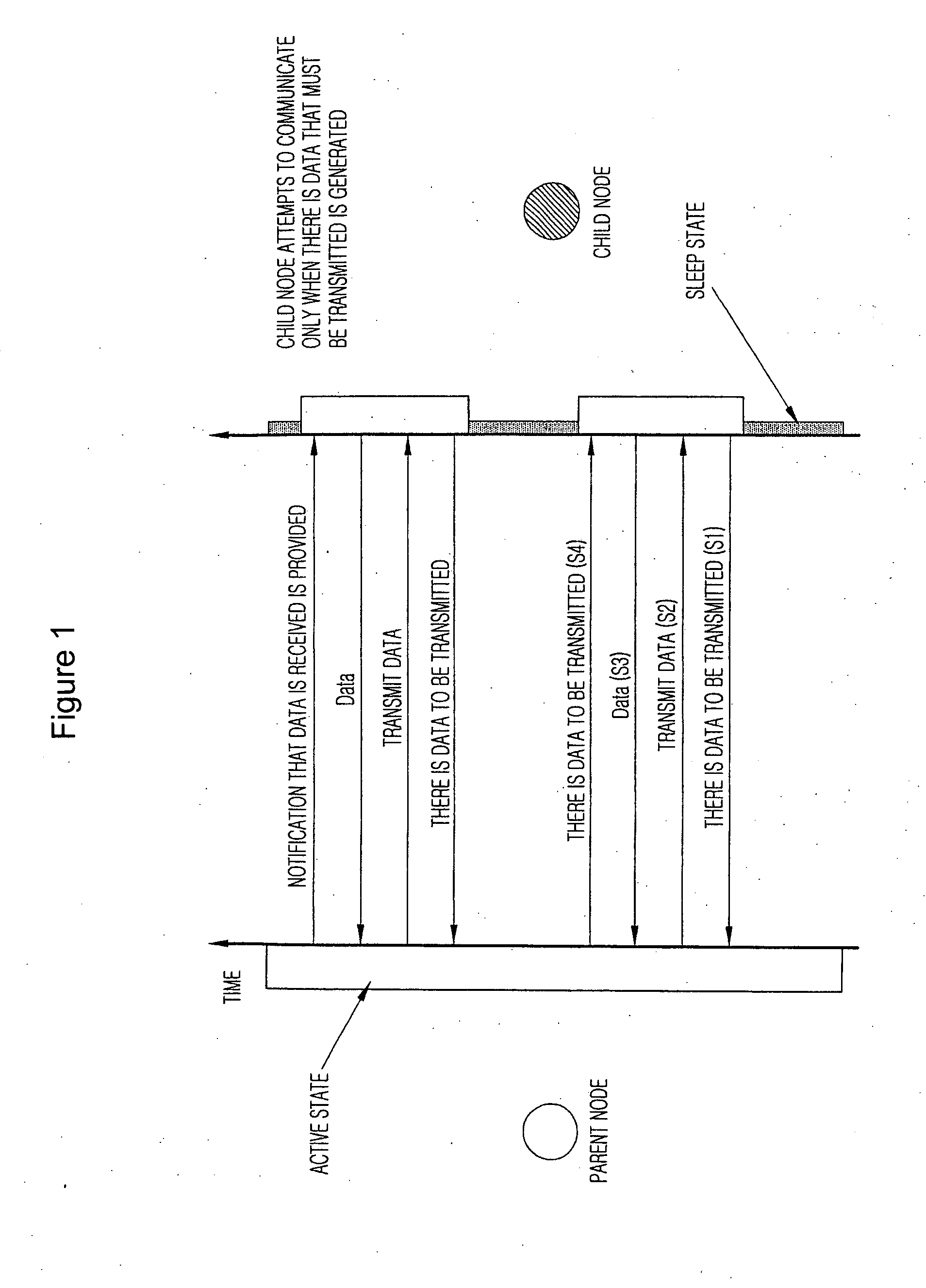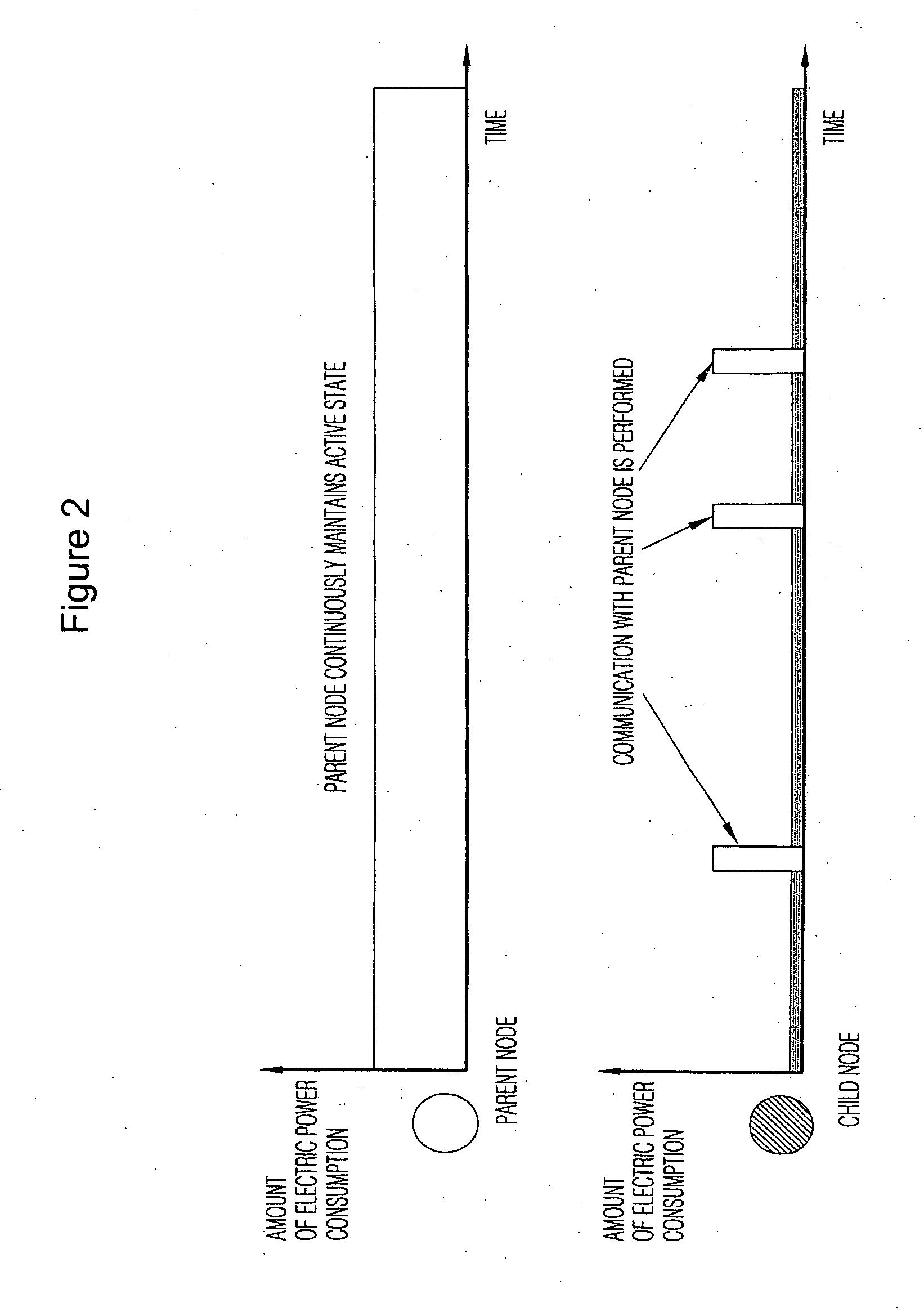Method of minimizing electric power consumption in non-beacon network
a non-beacon network and network technology, applied in power management, high-level techniques, instruments, etc., can solve the problems of increasing the cost necessary to construct a system which uses a main electric power, the inability to use electric power supplied from a battery, so as to minimize the electric power consumption and minimize the effect of electric power consumption
- Summary
- Abstract
- Description
- Claims
- Application Information
AI Technical Summary
Benefits of technology
Problems solved by technology
Method used
Image
Examples
Embodiment Construction
[0023]In order to sufficiently understand advantages of the present invention and the operation of the present invention and objects accomplished through the embodiments of the present invention, the accompanying drawings which illustrate the preferred embodiments of the present invention and details described in the accompanying drawings should be referred to.
[0024]Hereinafter, the present invention will be described in detail by describing preferred embodiments of the present invention with reference to the attached drawings. The same reference numerals, which are used throughout the different drawings, designate the same or similar components.
[0025]FIG. 3 is a view showing a communication method using a non-beacon network according to the present invention, and FIG. 4 is a view showing the amount of electric power consumption in a parent node and a child node when the communication method using a non-beacon network according to the present invention is performed.
[0026]Referring t...
PUM
 Login to View More
Login to View More Abstract
Description
Claims
Application Information
 Login to View More
Login to View More - R&D
- Intellectual Property
- Life Sciences
- Materials
- Tech Scout
- Unparalleled Data Quality
- Higher Quality Content
- 60% Fewer Hallucinations
Browse by: Latest US Patents, China's latest patents, Technical Efficacy Thesaurus, Application Domain, Technology Topic, Popular Technical Reports.
© 2025 PatSnap. All rights reserved.Legal|Privacy policy|Modern Slavery Act Transparency Statement|Sitemap|About US| Contact US: help@patsnap.com



